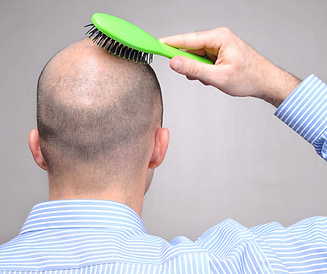Crown hair restoration, or the restoration of hair in the circular pattern on the top of the scalp, requires a highly skilled surgeon. The natural whorl pattern in the crown is different from the rest of the scalp, and replicating it requires a level of expertise and artistry that not all surgeons possess.
How does it work?
The hair transplant surgeon must create tiny incisions that are placed closely together at varying angles to mimic the natural swirl of the crown. Random incisions, even if placed closely together, may not result in a natural-looking result and can lead to styling restrictions and the appearance of something “not being right.” It is also important that the technicians handling the follicular units during the implantation process do not damage the grafts or harm the surrounding ones. Crown hair restoration is a delicate process that requires a highly skilled surgeon to achieve a truly natural and dense result.
How long does a crown hair transplant take to grow?
The timeline for crown hair transplant is similar to other hair transplant procedures, with some minor variations. It usually takes a full year, and in some cases up to 18 months, for the transplanted hair to fully mature. After the procedure, the recipient area will take about a week or two to heal. Four to six weeks later, most of the transplanted hair will shed. After about three to four months, tiny hairs will start to sprout and grow, darkening as they mature. By six months, the transplanted hair will be about 60-70% mature. Finally, after one year, most of the transplanted hair will have fully matured, although some “slow growers” may take longer. The process may take time, but the end result is worth it as the newly transplanted hair will look and feel like your own natural hair.
The cost of a crown hair transplant
The cost of a crown hair transplant is similar to other hair transplant procedures. The price may vary based on factors such as the type of procedure, clinic location, and the number of follicular units being transplanted. For example, follicular unit extraction (FUE) is typically more expensive than follicular unit strip surgery (FUT), and prices may vary among different clinics in the same location. On average, the cost per graft for FUT ranges from $4 to $6, while the cost per graft for FUE ranges from $6 to $8. It is important to note that not all clinics are the same, and the quality of the result is not necessarily related to the price. It is worth considering that large procedures performed at certain clinics may be priced lower per graft than smaller procedures, offering a better value for the patient. Ultimately, it is important to carefully research and compare prices and services among different clinics before making a decision.
Is it worth it?
Some hair transplant patients have reported slower growth in the crown area compared to the hairline and mid-scalp, but there is no scientific evidence to support this. The appearance of slower growth in the crown may be due to the natural whorl pattern of the hair, which causes it to fan out from a central location and may not appear as dense as hair in other areas. Additionally, surgeons may limit the number of grafts used in the crown to create the illusion of density and avoid sacrificing density in the hairline and mid-scalp, which can impact the overall quality and naturalness of the result. However, patients with above-average donor hair and potential future needs can safely have a higher density of transplanted hair in the crown. Overall, the rate of growth in the crown area is similar to other areas of the scalp.
Final thoughts…
When considering a hair transplant procedure, it is crucial to research and carefully select the surgeon to ensure the best possible results. Location and price should not be the main factors in the decision-making process. It is better to choose a highly skilled and reputable surgeon who can produce excellent results, even if they are not local or more expensive, than to take a risk with a lesser-known doctor who may be cheaper but may not be able to deliver the desired outcome. Choosing a highly skilled surgeon who is capable of performing state-of-the-art crown restoration procedures can save time, money, and frustration in the long run. At Trichogenics, our surgeons are known for their exceptional talent, skill, and ability in performing hair transplant procedures, including crown restoration. We strive to provide our patients with the highest level of care and the best possible results.



